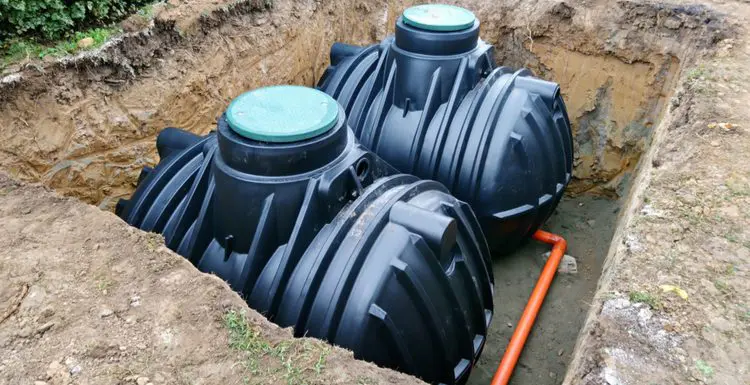Home renovations can be a real pain, especially when it comes to your wallet.
When trying to figure out the cost of a new septic system, it can get overwhelming.
We’ll help you navigate all the factors affecting it below.
We partnered with Networx to help you find well repairmen in your area. Click to below to get a FREE quote.
How Much Does a Septic System Cost?
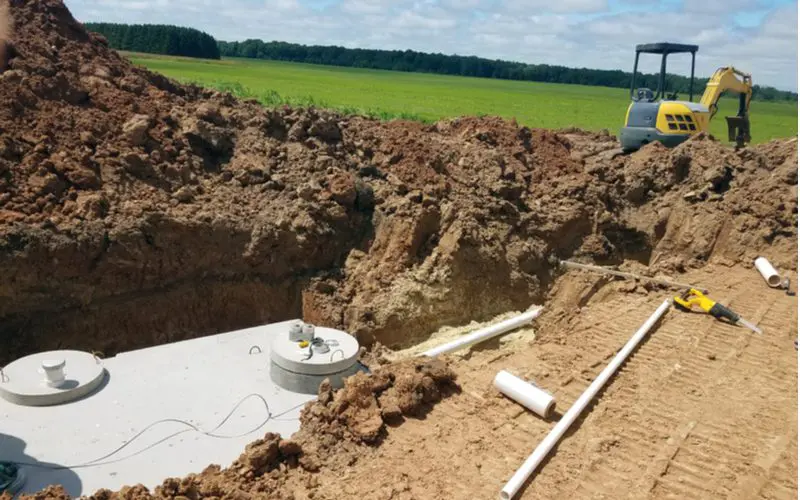
Dcwcreations/Shutterstock
Several factors go into the pricing of a new or replacement septic system.
But to give you a quick snapshot of the average cost, we used a three-bedroom home, the standard size in the United States. For a home of this size, the typical tank is 1,250 gallons.
The Short Answer
- Aerobic: $10,000–$20,000
- Anaerobic: $3,000–$8,000
- Mound: $10,000–$20,000
- Other Alternative Systems: $5,000–$18,000
The average cost, including installation labor and the tank itself, varies between $2,000 and $10,000, though it can be as high as $15,000. If you live in a modest-sized home, expect to spend close to the national average of $6,000.
The Long Answer
As we stated above, several factors go into the cost of a septic system. We’ll review these so that you can be armed with all the information that you need before getting a quote.
Type of System
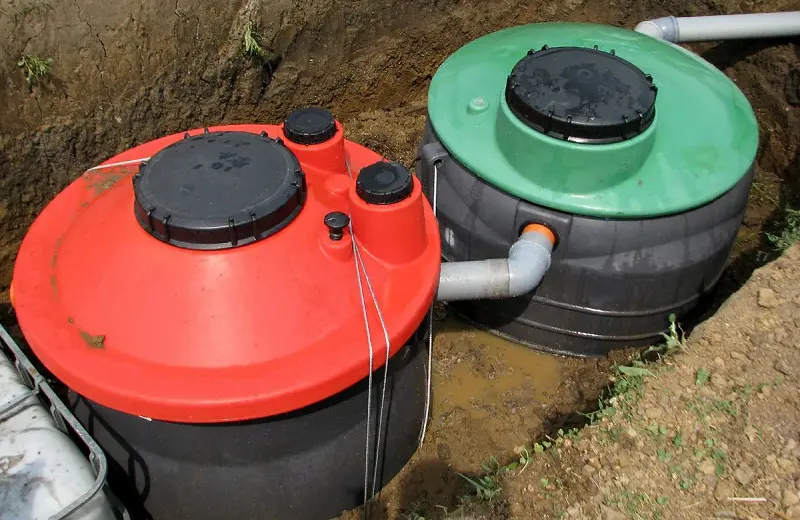
trufero/Shutterstock
There are several types of septic systems. To get you the best information possible, we’ll focus on some of the most common types of septic tanks. These are aerobic, anaerobic, and mound septic systems.
To determine which type will fit your needs, you’ll have to consider several factors. These include:
- Size and layout of your property
- How deep the groundwater is
- Your budget
For example, if you have a property with groundwater close to the surface, you’ll want to consider a mound septic system. This is just one of many alternatives to a traditional septic tank.
Because this system requires a sand mound to be constructed, the costs of a mound system trend higher than other systems.
Aerobic and anaerobic refer to the use of oxygen in the septic system. Aerobic systems require pumping oxygen into the chamber to break down solid waste. Anaerobic systems require much less complexity.
Anaerobic septic systems are much less expensive, making them much more common.
There are many other alternatives to the standard aerobic or anaerobic systems outside of the mound system. These include chamber systems, drip distribution systems, constructed wetland systems, cluster systems, and more.
It is unlikely you’ll purchase any of these, but that depends on your specific needs. The best way to figure this out is to reach out to a contractor or inspector who can inform you of which septic system is most appropriate for your home.
We won’t bore you with the complicated details of each system, but the availability of so many different types means that prices will vary.
Size of the Tank
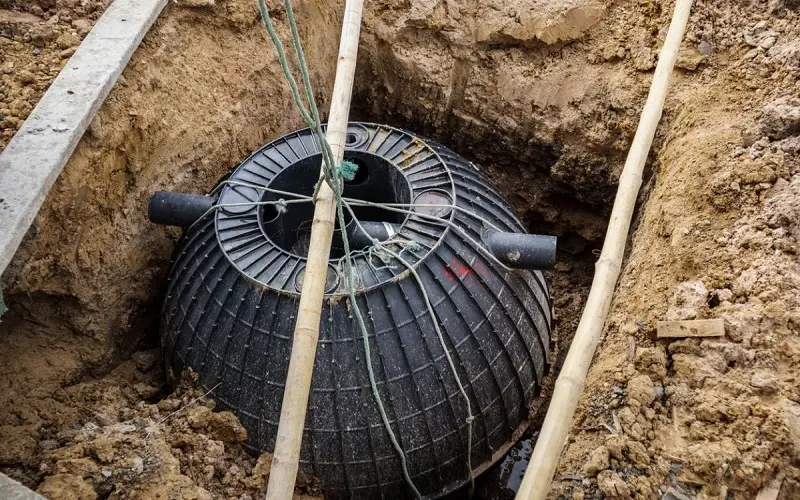
Kwangmoozaa/Shutterstock
The total cost of your septic system is also affected by the size of the tank. When settling on the size of your new septic tank, you’ve got to think about a few different things.
The elements that you must consider when choosing a septic tank size are:
- Local governmental regulations
- The type of septic system that you choose
- The ground geology where you live (soil type and groundwater levels)
- The size of your home and how much waste it will produce
- Of course, the cost and how this will fit into your budget
Obviously, larger homes require larger tanks, especially if they house big families. If that’s the case, this will lead to an increase in your total cost.
However, sometimes it isn’t quite so straightforward.
For example, a smaller, two-bedroom home may be fine with a smaller tank, such as a 750-gallon tank, but local government regulations may mandate a minimum tank size of 1,000 gallons or more.
While size is very important, most people decide to go with a larger tank for several reasons, including increased lifespan and a lower chance of system failure. 1,000- or 1,250-gallon tanks are the most commonly purchased tank sizes.
Installation Costs
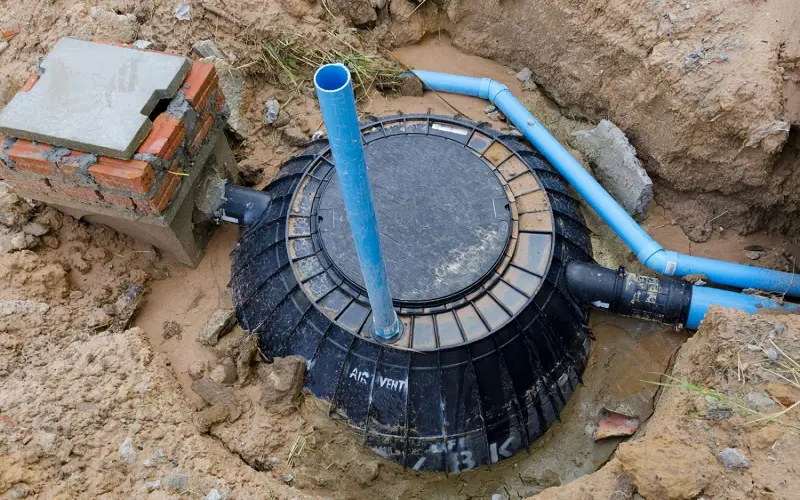
TU studio/Shutterstock
There are a few things to consider when figuring out the cost of installing your new system.
- Landscaping: The first step is to prepare the land for your new septic system. This includes excavation and grading. The cost of this ranges from $1,000 to $5,000 or more. It’s often discounted and included in your total installation costs.
- Building Permit Costs: This can range from hundreds to thousands, depending on your local regulations.
- Perc Test: Perc test checks the soil’s ability to absorb water and filter out contaminants. The cost ranges from $100 to $1,000 or more.
- Drainfield: Also called a leach field, the installation cost is between $2,000 and $10,000 but can exceed $15,000 depending on other factors.
- Labor Costs: Labor costs tend to make up the majority of your installation costs. They include all of the above. It’s best to shop around for a reputable contractor who will charge you a lower labor fee if you are trying to keep your costs down.
All of these costs go into the total price of your new septic system. If you’re trying to keep your costs down and your wallet happy, shop around for the lowest labor costs.
However, since a septic system is a long-lasting, important part of your home that will affect your convenience and your health, you want to be sure to select an experienced and confident contractor.
Type of Tank
There are several different types of tanks you can use with each system. The materials vary in price and can affect your overall costs.
- Steel: This is the least commonly used material because it is not as durable as other tanks. The cost varies.
- Plastic/Polyurethane: $500-$2,500
- Fiberglass: $1,500-$2,000
- Concrete: $700-$2,000
Each type of tank comes with its own pros and cons. For example, concrete tanks are the most durable yet the most difficult to install, while plastic tanks are the least expensive but cannot withstand any excess weight.
Fiberglass tanks are even more resistant to corrosive chemicals than concrete tanks.
However, fiberglass tanks are very light and are prone to float if there is any flooding, so they must be securely anchored. Of course, like everything else we have discussed, these costs are also dependent on the size of the tank.
When choosing the best material for your septic tank, you must decide what is most important to you: cost, durability, ease of installation and maintenance, or any other element that arises during the shopping process.
Frequently Asked Questions
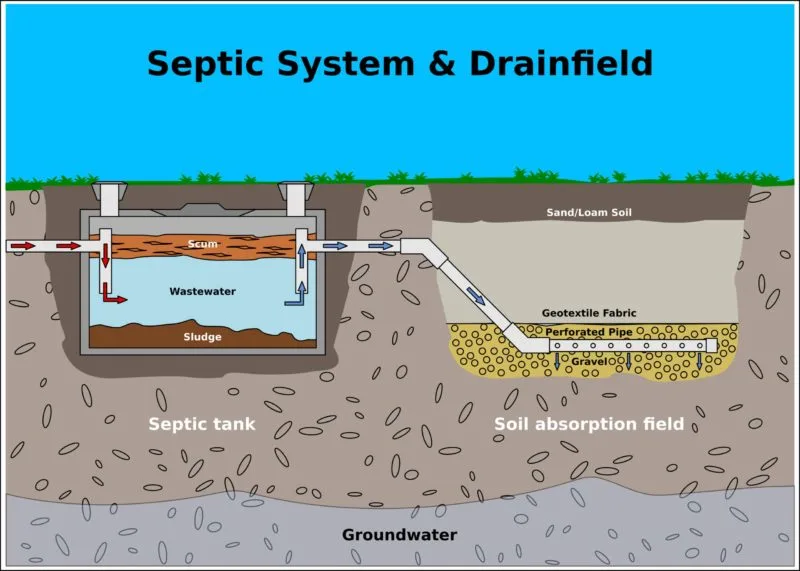
Slave SPD/Shutterstock
How many years does a septic system last?
Septic systems can last between 20 and 40 years if properly maintained. This depends on the type of system and the materials used during installation.
What is the cheapest septic system?
Conventional septic systems are the least expensive. These affordable systems have an average cost of around $3,000.
What is the alternative to a septic tank?
The most popular alternative to a tank is a mound system used when the water table is too high. These expensive systems consist of the construction of a sand mound.
Which is better, concrete or plastic septic tank?
The answer to this depends on how much you are willing to spend and how important durability is to you. Plastic tanks are less durable than concrete, and there are risks to installing them.
These include the tank crushing or cracking when weight is applied to the soil (such as a vehicle driving over it). Concrete lasts much longer but is more difficult to install and therefore more expensive.
How big of a drain field do I need?
The answer to this relies on home and property size, as well as the soil’s properties. The average size for a three-bedroom house is around 750 square feet.
What is the most expensive part of a septic system?
The priciest part of a new septic system is going to be the drain field or leach field. This is also the most crucial part! A properly functioning leach field keeps your waste system from backing up into your sinks and toilets.
This is a huge problem because it lets harmful bacteria to infiltrate your home. Drain fields are not only expensive to install but are easy to damage and also pricey to repair.
We partnered with Networx to help you find well repairmen in your area. Click to below to get a FREE quote.
What Does a Septic System Cost?
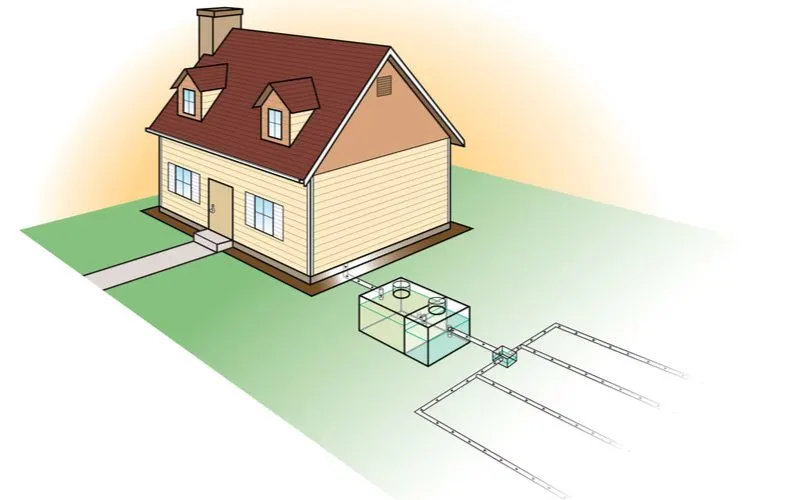
Shanesabin/Shutterstock
Septic tanks can be a tricky business. There are many factors to consider when trying to estimate the price of your new installation.
All things considered, you can bet on shelling out somewhere around the national average of $6,000.
But if you have other circumstances that may affect the size or type of your septic system, that price may vary.
Hopefully, this short guide has helped give you some insight into typical septic system costs.

